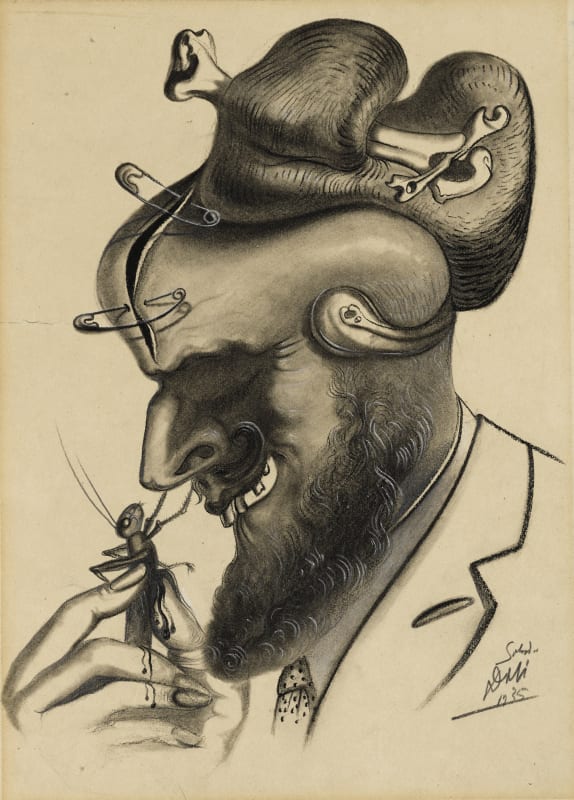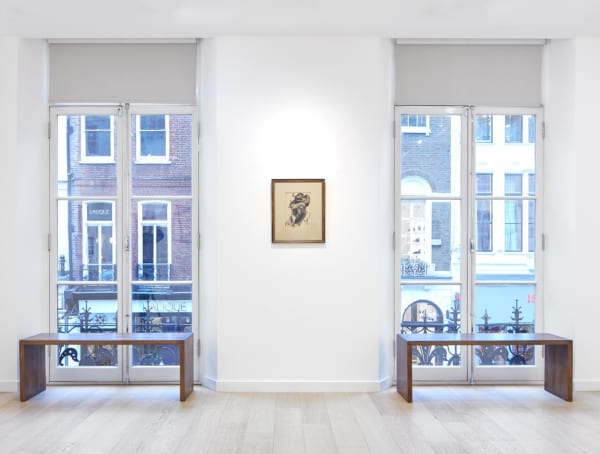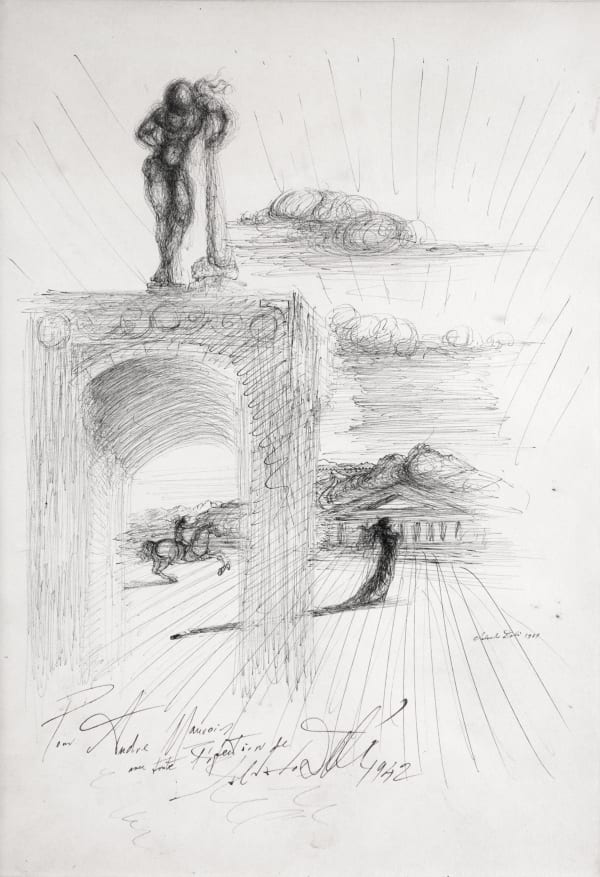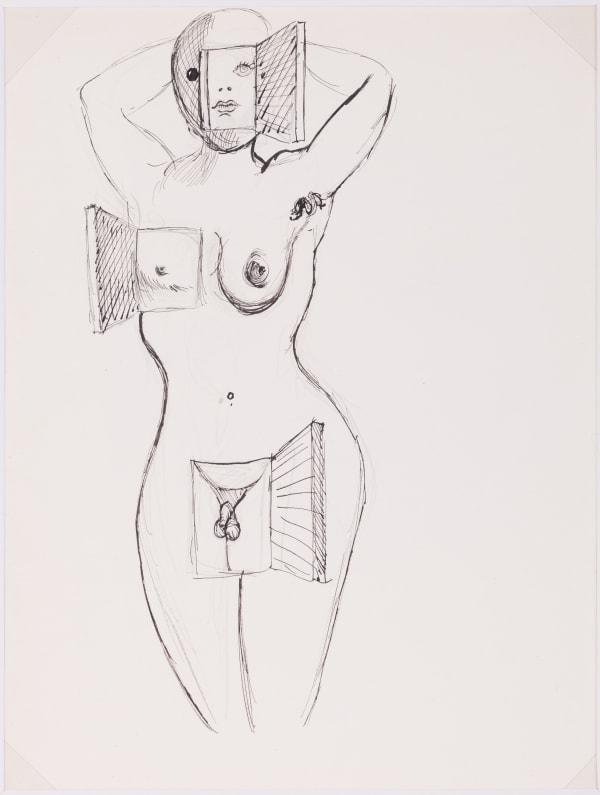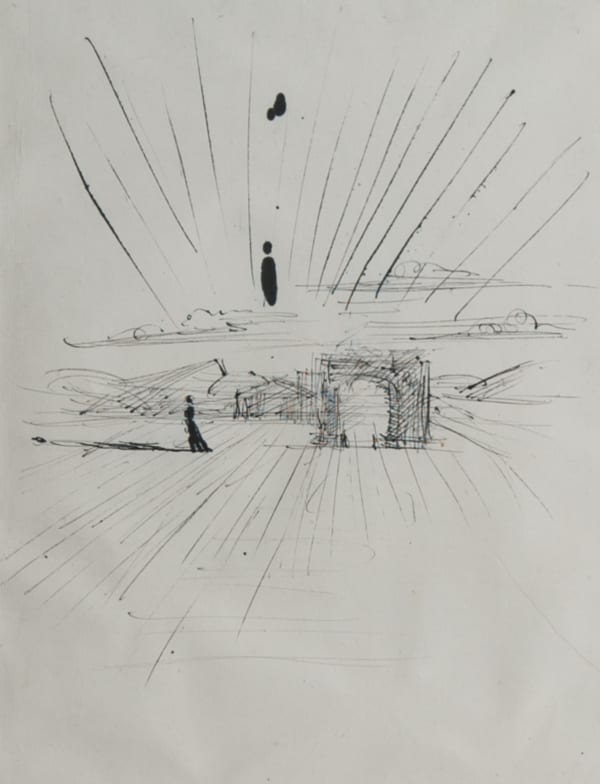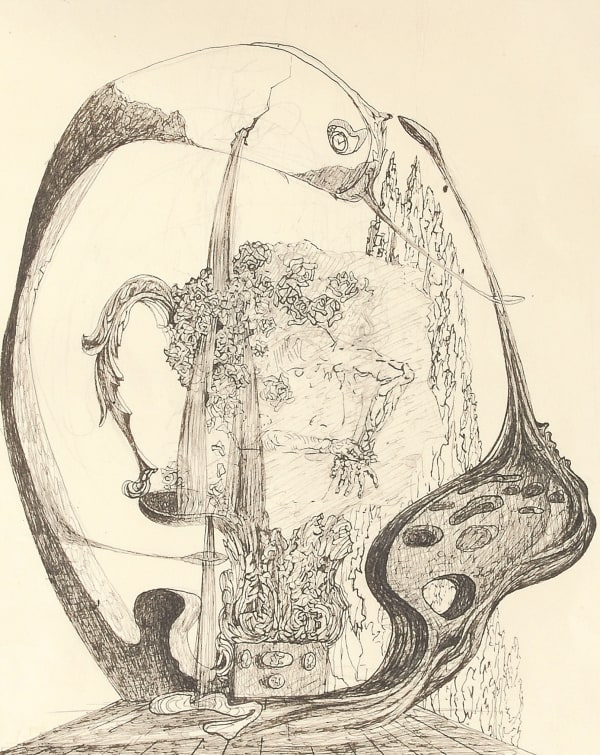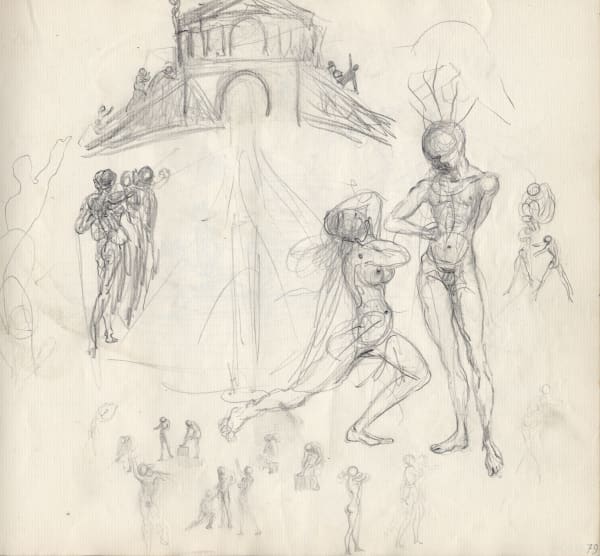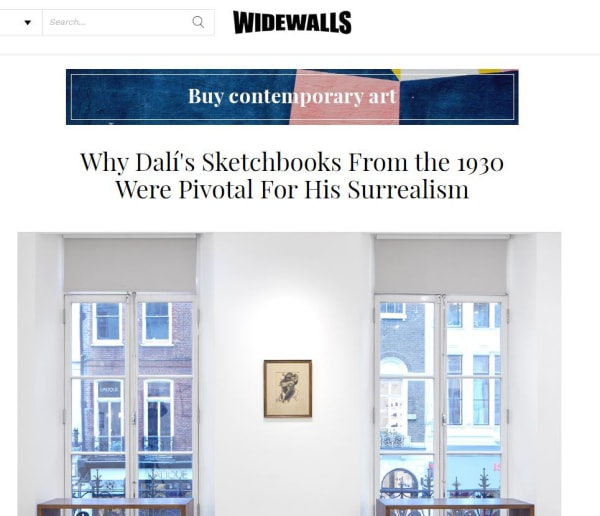Dalí: Sketchbooks from the 1930s
Omer Tiroche Gallery is pleased to announce Dalí: Sketchbooks from the 1930s, which takes the viewer on a visual journey through the inner workings of the seminal artist’s mind. Through the sketches and studies he made during the 1930s, this exhibition explores the most significant decade of Dalí’s career and provides an intimate insight into the development of some of the artist’s most pivotal and iconic imagery; from his infamous Mae West lips sofa and melting clocks, to Freudian drawers and crutches, many set within the familiar desert-like landscape taken from his beloved sea-side home in Cadaqués, Catalonia. Each of these motifs helped lay the foundations for many of Dalí’s key concepts in a number of his most acclaimed paintings.
Two key events that took place during the summer of 1929 inspired such a formidable decade of production from Dalí: the first was meeting his soon-to-be wife and lifelong muse, Gala, and the second was gaining recognition from André Breton, the leader of the Surrealist movement. Soon after, Breton welcomed Dalí as a fully-fledged member of the group and went on to describe the artist as an ‘incarnation of the Surrealist spirit’. Despite later being ousted in 1934, joining the movement had solidified Dalí’s status among the Paris avant-garde elite. As Dalí flourished in the spotlight and became a household name in the United States, he delved deeper into his exploration of capturing hallucinogenic and dream-like imagery in his work.
During the first half of the 1930s, Dalí developed a primary technique he called his Paranoiac-Critical Method. In short, the misreading of the world around us, where figures and objects initially appear as one thing but then morph into something completely unrelated; rock formations doubled up as faces, swans transformed into elephants, or lampshades into one-eyed figures. This method also permeated through to many of his scenography and costume designs, an example of which is illustrated in Dalí’s Study for the ballet Bacchanale, 1934; the elongated neck of a swan morphs into an outstretched hand. Dalí’s use of his Paranoiac-Critical Method greatly contributed to the enigmatic qualities of his work. Breton again praised Dalí for this approach and declared it instrumental to Surrealism.
The exhibition centres around four sets of sketchbooks made between 1930 and 1939. The reunion of these sketches is the culmination of years of research, piecing together drawings from several individual collections. Some of the pages from these sketchbooks are preparatory studies for a number of Dalí’s most important paintings, such as Portrait of Vicomtesse de Noailles, 1932, Phantom Cart, 1933 and The Burning Giraffe, 1937. Others depict themes the artist only implemented years later such as Untitled (Woman with a Pole), c.1930 which Dalí revisits in Queen Salomé, 1937. In addition, there are drawings that reveal Dalí often returned to the same themes even after they had already been painted; Dalí’s melting clock and barren landscape of Cadaqués, seen in Jeune fille au cerceau et montre molle, 1932, bear a striking resemblance to those in one of the artist’s most celebrated paintings, The Persistence of Memory, painted only one year earlier, in 1931. Interestingly, the theme of the girl playing with a hoop appears for one of the first times in the work exhibited in our show, foreshadowing the theme of children with hoops that Dalí began to introduce in his works in 1933.
This collection of sketches showcases Dalí’s remarkable breadth as an artist and his unparalleled draftsmanship. Furthermore, they provide a unique pictorial thread illustrating the transition through a number of ideas that the artist had been developing at that time. In one group of sketches we can see the clear evolution of a concept page by page; an anthropomorphic, intertwining lamp transforms into a voluptuous female nude that is, in turn, reduced to her silhouettes. With each page these figures are increasingly supported by crutches protruding from their backs. The culmination of this idea is the surreal depiction of a male nude with his comically-sized phallus supported by a crutch that sprouts out of a secondary figure’s shoulder. For Dalí, crutches reference both weakness and support for his deep fear of sex and impotency.
Renowned for his surrealist paintings, drawings, sculptures and films, Salvador Dalí is one of the most internationally celebrated and recognisable artists of the 20th century. His radical, avant-garde approach to art not only greatly influenced his contemporaries but continues to have a lasting impact on the generations of artists that have followed. The works that Dalí made during the 1930s were arguably the most influential to his career, and helped to solidify his enduring status in art history as the self-proclaimed “genius artist”. In this exhibition the viewer is invited to not only observe the inner workings and development of Dalí’s archetypal imagery, but are also provided with a comprehensive overview of important themes and ideas that Dalí continued to revisit in his œuvre well beyond the 1930s.
-
 Salvador DalíEtude a l'Architecture, Chevalier et Personnages, 1939 - 1942India ink on paper38 x 27.5 cm.
Salvador DalíEtude a l'Architecture, Chevalier et Personnages, 1939 - 1942India ink on paper38 x 27.5 cm.
14 15/16 x 10 13/16 in.$ 80,000.00 -
 Salvador Dali, Nu debout aux Fenêtres, 1937
Salvador Dali, Nu debout aux Fenêtres, 1937 -
 Salvador Dali, Paysage (Illustration Pour Secheresse), 1936
Salvador Dali, Paysage (Illustration Pour Secheresse), 1936 -
 Salvador DalíPaysage avec Temple et Arc de Triomphe, 1939Quill drawing, indian ink on ancient laid paperSheet Size: 42.2 x 25.6 cm.
Salvador DalíPaysage avec Temple et Arc de Triomphe, 1939Quill drawing, indian ink on ancient laid paperSheet Size: 42.2 x 25.6 cm.
16 ⅝ x 10 1/16 in.
Image Size: H32 x L24.5 cm.$ 50,000.00
-
 Salvador Dali, Study for Portrait of the Viscountess Marie-Laure de Noailles, c.1931-32
Salvador Dali, Study for Portrait of the Viscountess Marie-Laure de Noailles, c.1931-32 -
 Salvador DalíThéâtre et scène Saliva Sofa, pour le projet de film avec les Marx Brothers Giraffes on Horseback Salad, 1937Ink and pencil on paper26.7 x 18.4 cm.
Salvador DalíThéâtre et scène Saliva Sofa, pour le projet de film avec les Marx Brothers Giraffes on Horseback Salad, 1937Ink and pencil on paper26.7 x 18.4 cm.
10 ½ x 7 ¼ in. -
 Salvador DalíFemme à Béquilles (Recto/Verso), c.1937Pencil on paper17 x 10.8 cm.
Salvador DalíFemme à Béquilles (Recto/Verso), c.1937Pencil on paper17 x 10.8 cm.
6 11/16 x 4 ¼ in.£ 9,000.00 -
 Salvador DalíSingle Figure Study, c.1939Pen and ink on paper22 x 28 cm.
Salvador DalíSingle Figure Study, c.1939Pen and ink on paper22 x 28 cm.
8 11/16 x 11 in.£ 15,000.00
